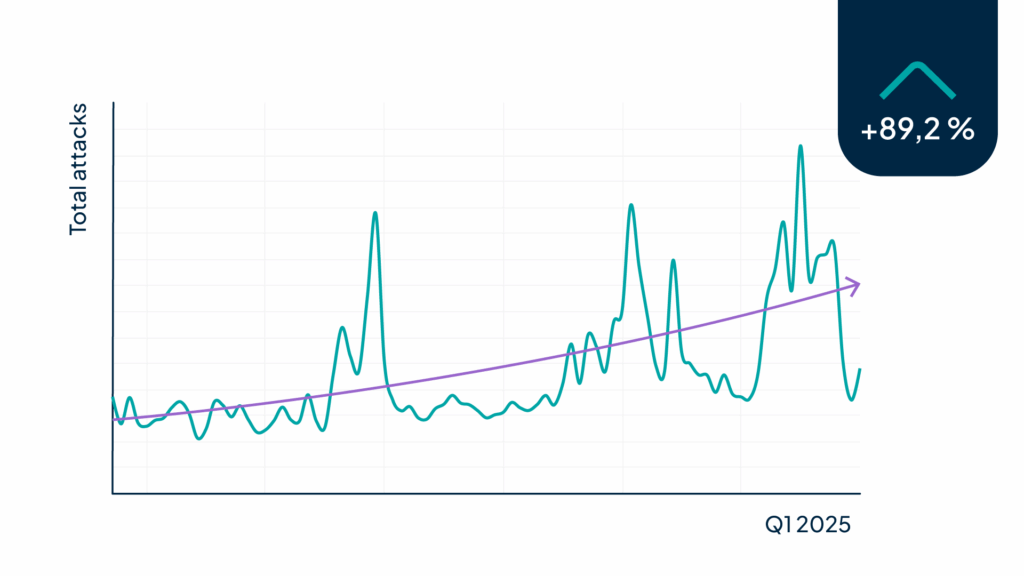Navigating the complex cybersecurity landscape

29 Apr 25

So far in 2025, we have detected an 89.2% increase in the volume of cyberattacks targeting websites and web applications. This sustained growth reflects a global trend and confirms that risk exposure is increasing significantly across all sectors.

The figures are not an isolated case: according to the Ministry of Finance, the economic impact of cyberattacks in Spain is around 30 billion euros annually.
Security is no longer limited to land, sea, air, or space. The cyber domain has emerged as another strategic dimension, forcing states and organizations to adapt their capabilities to operate in a coordinated manner across all fronts. In this new context, the lines between traditional conflicts and digital threats are increasingly blurred.
Ongoing armed conflicts—such as the Russia–Ukraine war and the Israel–Hamas conflict—have intensified global hacktivist activity. Distributed Denial of Service (DDoS) attacks have become the most common tactic, carried out by collectives aiming to promote political or social agendas through digital sabotage.
Until recently, so-called Advanced Persistent Threats (APT) were the exclusive domain of state actors. Today, however, highly organized cybercriminal groups are replicating these methods, investing resources into zero-day vulnerability exploitation to maximize impact and profitability.
This shift raises the sophistication of cyberthreats and compels organizations to implement defensive infrastructures that go far beyond regulatory compliance. Early detection and automated response have become critical capabilities.
According to the report Europe’s next cybersecurity hub from McKinsey & Company, Spain is positioning itself as a European benchmark in cybersecurity thanks to:
Added to this is the recent Industrial and Technological Plan for Security and Defense, approved by the Council of Ministers in April 2025, which contemplates a significant investment to meet the commitment of 2% of GDP for defense, including cyber defense as an essential component.
At Transparent Edge, we don’t just observe these threats: we react to them in real time. We protect more than 5,000 websites with edge computing-based solutions, offering visibility and the ability to respond to incidents from a single platform.
Understanding the evolution of cybercrime is key to anticipating them. Only with accurate and up-to-date information can strategic decisions be made.